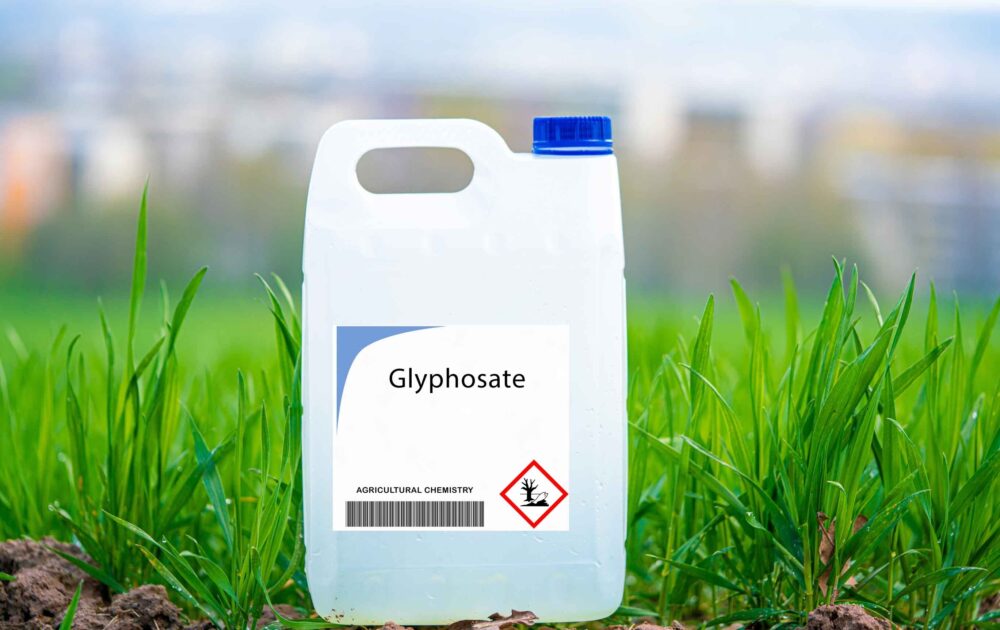Our test tells you which everyday chemicals you've recently come into contact with, and easy steps you can follow to reduce your exposure to them.
Groundbreaking research links glyphosate exposure to cancer

Today we joined a webinar hosted by PAN to hear a first hand account of what’s been billed as ‘the most comprehensive global study ever’ about glyphosate.
Micheal Antoniou, Professor of Molecular Genetics and Toxicology at Kings College London took us through the study published in June that confirms that glyphosate and glyphosate-based herbicides cause multiple types of cancer in animals reared in a laboratory setting, even at exposure levels deemed to be “safe” by the EU.
Glyphosate is a broad spectrum herbicide used across the world to kill weeds and improve agricultural yields.
The long-term, animal based study investigated the carcinogenic effects of glyphosate and two glyphosate-based herbicides by exposing Sprague–Dawley (albino) rats to three levels of doses of these chemicals from before birth and up to 2 years. The study found statistically significant, dose-related increases in both benign and malignant tumours in all three groups compared to control animals.
Cancerous tumours developed in the animals dosed with either glyphosate alone, or one of two commercial formulations which include glyphosate. Tumours were detected at all dosage levels including the lowest, raising questions about what is considered a “safe” dose. These included leukaemia, and cancers of the skin, liver, thyroid, nervous system, ovary, mammary gland, adrenal glands, kidney, urinary bladder, bone, endocrine pancreas, uterus, and spleen. Many of these tumors are considered rare in this rat strain.
Increased early deaths were also recorded, particularly for leukemia and other solid tumours, highlighting that pre-natal and early life exposure has more carcinogenic effects. The increased tumour incidences occurred in both male and female rats.
The conclusions of the study bring onto question what is currently considered “safe” glyphosate exposure by the EU and UK. The authors of this study are calling on regulators for significant reductions in “safe” levels of exposure to glyphosate for humans, and conclude that their study is grounds for a total ban by regulators across the world.
What do we know about the health effects of glyphosate exposure in humans?
During the presentation Professor Antoniou took us through the data, and explained how it could be extrapolated to suggest a serious risk to human health. The animals in this study were administered with a dose in line with an accepted ADI, or acceptable daily intake, which is an estimate of the amount of a substance, like glyphosate, that can be ingested daily over a lifetime without causing adverse health effects.
In this study, tumours were seen in animals exposed to the ADI for their body weight, which translates to human equivalent of approximately 35g per daily of exposure to glyphosate based on current ADI’s deemed to be “safe”. The results of this study suggest this level is far too high, and calls for it to be lowered significantly, by 100 or 1000 times, or banned outright.
The IARC classify glyphosate as a ‘probably carcinogenic to humans’. Links have been made between occupational exposure to glyphosate and the development of some forms of cancer, with legal claims successfully made for millions of dollars of compensation in cases where workers exposed to glyphosate have gone on to develop non-Hodgkins lymphoma.
Glyphosate exposure has been linked with adverse changes in breast cell tissue that can disrupt normal cell mechanisms and lead to the development of ‘hormone sensitive’ breast cancer. Glyphosate was detected in the urine of 99% of pregnant US women, and
Raised glyphosate levels have been positively associated with raised levels of oxidative stress markers; this is one of the indicators of carcinogens in the body that can lead to the development of cancer. French researchers have made a positive correlation between glyphosate levels in seminal plasma and raised oxidative stress, which is known to be a crucial factor in male fertility. Oxidative stress plays a key role in sperm mobility and function.
What impacts could this global study have?
This research is one of the most comprehensive long term carcinogenicity studies on glyphosate to date, and its findings have important implications for regulatory assessments and public health policies regarding glyphosate and related herbicides.
The EU renewed glyphosate approval with further restrictions for 10 years in December 2023 after member states failed to reach a majority to either approve or reject the proposal to ban its use, so it is still considered by regulators to be “safe” at specified levels and usage. EU countries including Austria, France, and Germany have since implemented their own bans or restrictions on glyphosate use. The UK will review glyphosate use in December 2026.
In response to this landmark study, the EU have agreed to review this new data to identify if it still meets the EU’s safety standards. If this evidence is strong enough, the EU would have huge implications in the UK and beyond.
This evidence points increasingly to glyphosate presenting a serious health risk to both humans and animals and we support the study’s authors call for a ban on glyphosate.
Read the full study